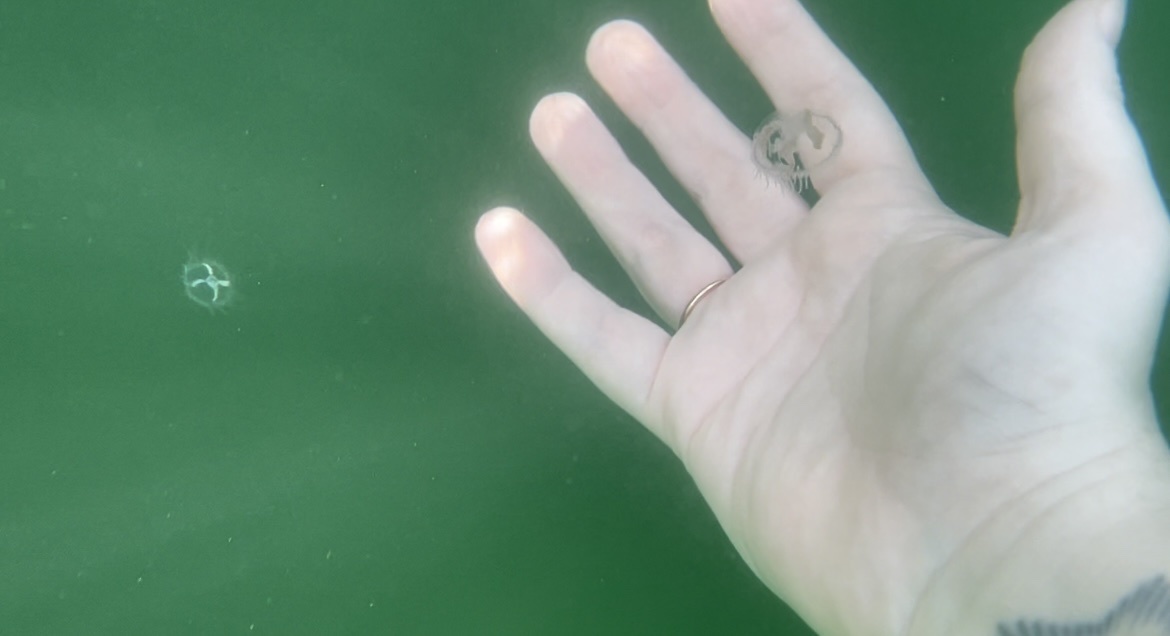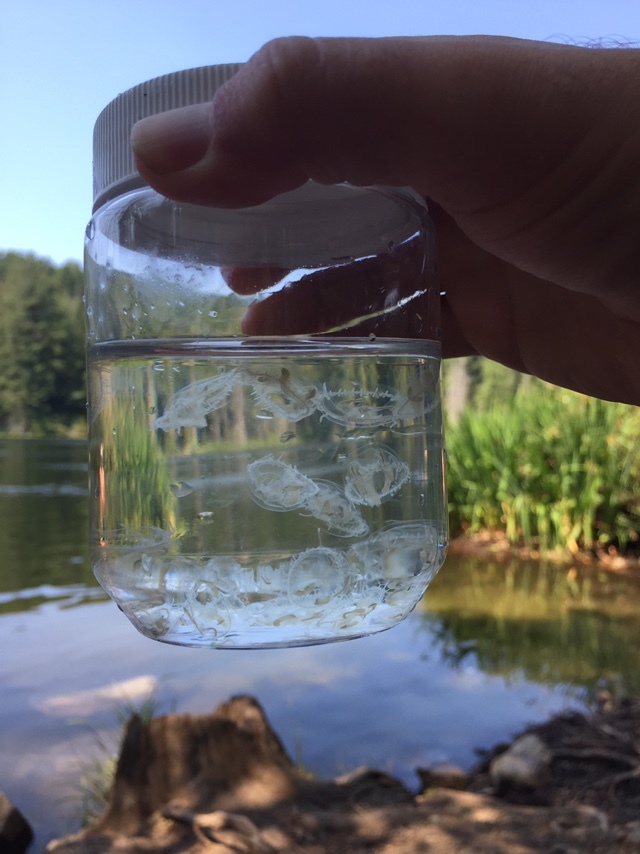Turns out jellyfish aren’t just found in oceans; they can also be spotted in lakes and rivers — even in Canada.
And while they’ve been in some areas for a while, they’re expanding their range and becoming increasingly common.
The species is Craspedacusta sowerbii, commonly known as Peach Blossom Jellyfish. There’s still a lot to learn about this species but here are some answers to some basic questions:

Freshwater jellyfish ©VGB | iNaturalist
1. What Do They Look Like?
Peach Blossom Jellyfish have two forms – the polyp stage and the medusa stage.
Most of their lives are spent as a polyp, easily going unnoticed in this phase. Polyps are small, somewhere around one to two milimetres in size. They are found near the bottom of lakes and attach themselves to hard surfaces and vegetation. In this stage they reproduce by budding (asexually) and feed on zooplankton. They can survive Canada’s cold winter months by becoming dormant.
When water temperatures heat up above 25°C, they transform from the polyp stage to the medusa stage. This is when they look like a jellyfish, and this is when they become noticeable. They are bell-shaped and translucent. They are about five to 25 mm in diameter and have a whitish or greenish colour. They are found in the water column, and they also feed on zooplankton. They have tentacles, but unlike their saltwater relatives, they are not able to sting people. In this phase they reproduce sexually and can appear in large numbers that are referred to as a bloom. The medusa stage generally appears in mid to late summer.
2. Where Are They Found?
It is important to note that they are not native and are considered invasive. They are thought to originate from the Yangtze River in Asia. They are now found on every continent except Antarctica.
In Canada, they have been reported in British Columbia, Manitoba, New Brunswick, Ontario and Quebec.
3. How Did They Get Here?
It’s thought that they originally made their way outside of Asia on some aquatic ornamental plants. As for how they continue to spread, there are a number of theories. Aquatic birds may play a role, as may the movements of other animals. Recreational users who don’t clean, drain and dry their boats and other gear may also be transporting them to other areas. As the climate changes and the temperature of lakes rises, they become more hospitable for the medusa form of this non-native jellyfish.

Jellyfish in a jar. ©SR Weinstein | iNaturalist
4. What Impact Do They Have?
There is still much to learn about this species in Canada, and this includes their impacts on the environment.
Their diet is made up of zooplankton, an important food source for our native fish species. Currently, researchers aren’t sure if this will impact our native species. Timing wise, blooms of Peach Blossom Jellyfish typically don’t overlap when young fish are present, but how these interactions change is yet to be seen.
5. What Is Their Future?
One thing that is expected as temperatures warm, is for Peach Blossom Jellyfish to continue to expand their range, to be seen in their medusa form in larger numbers and to perhaps even persist longer in this form.
6. What Can We Do?
If you are a recreational user of a lake, be sure to clean, drain and dry all equipment before moving to another water body. And if you do see jellyfish floating in your lake, be sure to report it. This link lists where to report a sighting for your province.

